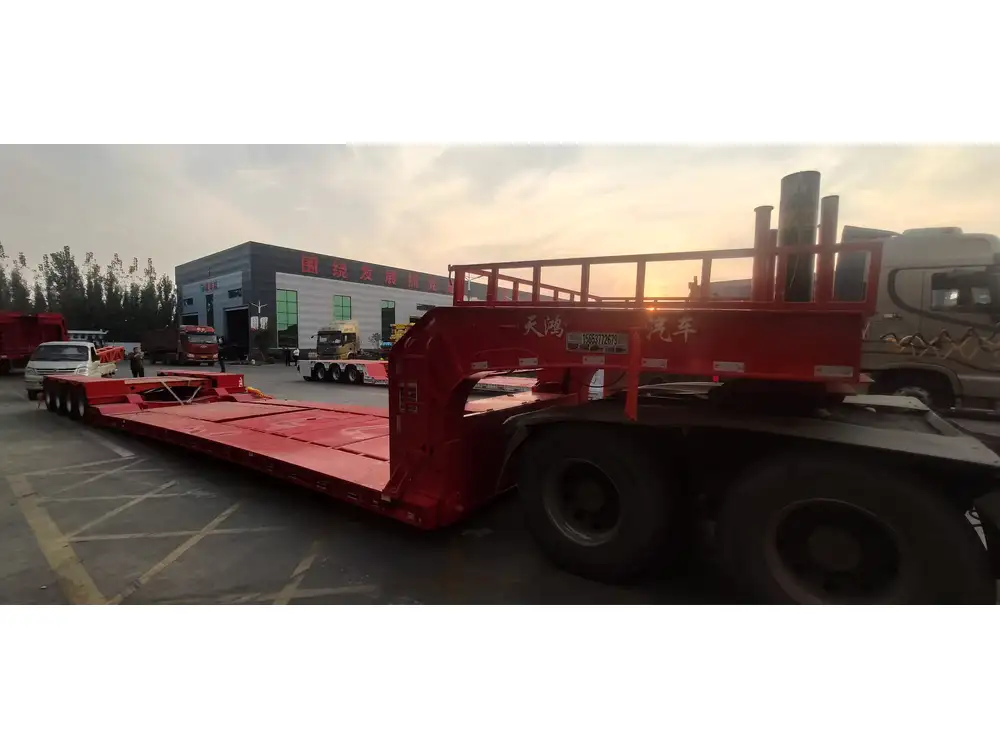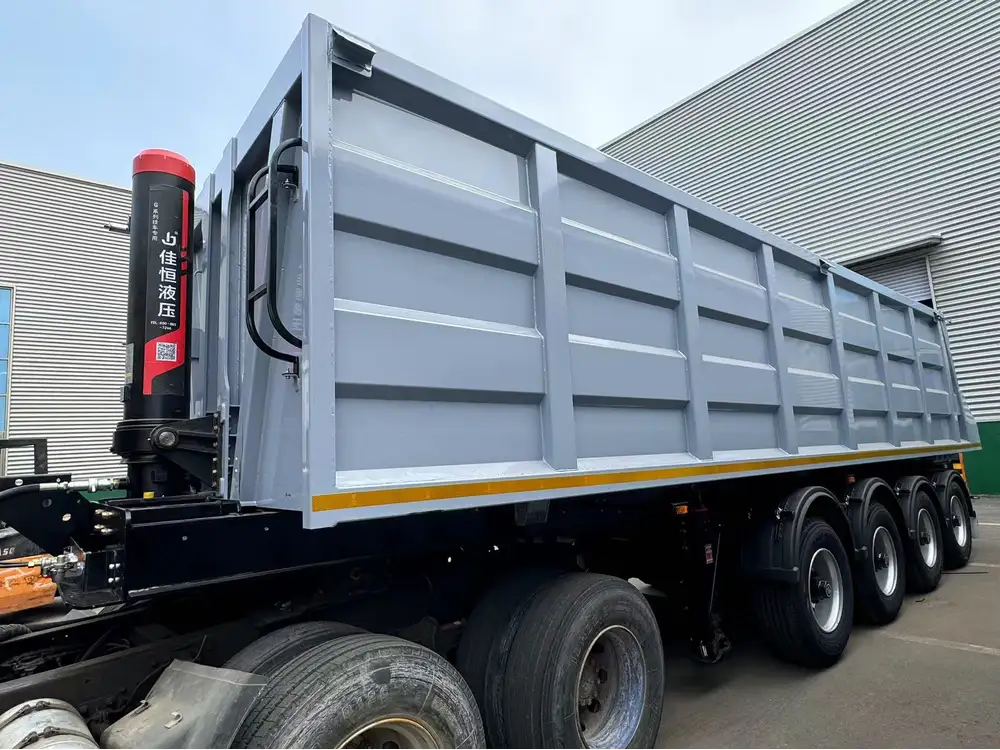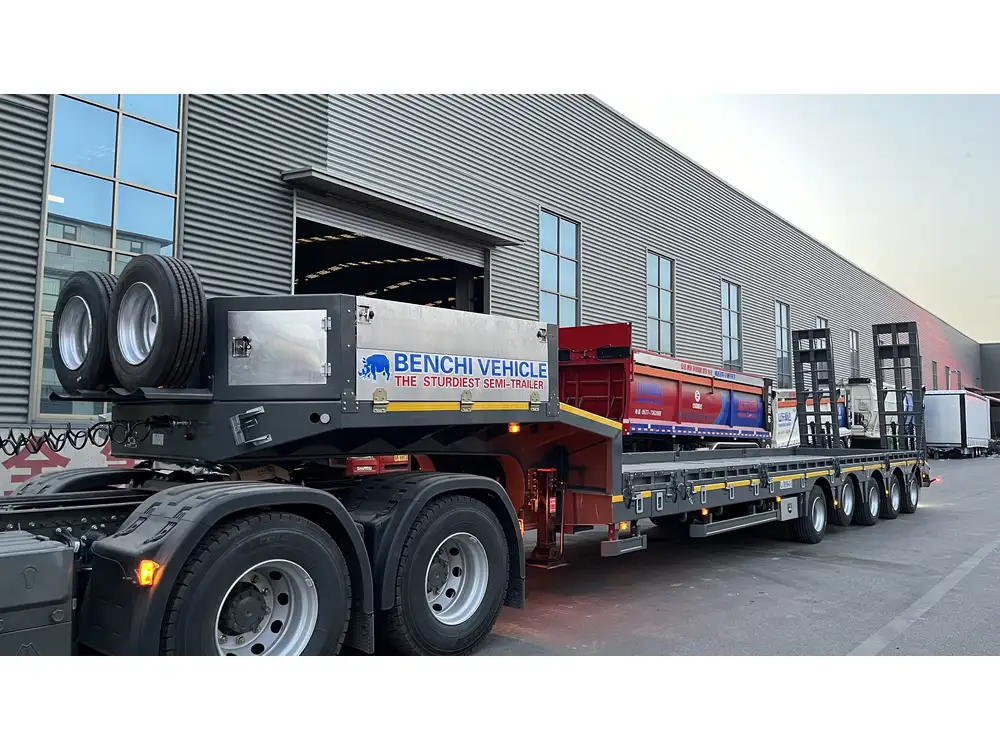When it comes to covering the floor of a flatbed trailer, selecting the right plywood is paramount for enhancing durability, ensuring safety, and providing a reliable surface for transporting goods. There are several factors to consider when making this choice, such as moisture resistance, weight, and overall strength. We delve into these aspects to guide you through the selection process, ensuring that your flatbed trailer is equipped to handle the rigors of transport efficiently.
1. Understanding Plywood Specifications
Before we dive into the types of plywood best suited for flatbed trailers, it’s essential to grasp some technical specifications. Plywood is layered wood veneer, glued together with adjacent layers’ grains running in opposite directions. This construction offers several advantages:
- Strength and Stability: Plywood can withstand heavy loads without bending or warping.
- Lightweight: Compared to solid wood, plywood provides strength at a lighter weight, making it favorable for trailers.
- Moisture Resistance: With the right type of plywood, you can mitigate the risk of damage from water exposure.
Table: Common Plywood Types and Their Characteristics
| Type of Plywood | Moisture Resistance | Strength Rating | Common Uses |
|---|---|---|---|
| CDX Plywood | Moderate | 1.0-1.5 | Trailer flooring and construction |
| Marine Plywood | High | 1.5-2.0 | Boats, trailers in harsh climates |
| Birch Plywood | Moderate | 1.0-1.5 | Interior finishes, not ideal alone for floors |
| Pressure-Treated Plywood | High | 1.0-1.75 | Outdoor applications, flooring |
| OSB (Oriented Strand Board) | Moderate | 0.9-1.4 | Subflooring, less recommended for trailer floors |

2. Types of Plywood for Flatbed Trailers
2.1 Marine Plywood
Marine plywood is often cited as the gold standard for environments with high moisture exposure. It is manufactured with waterproof glue and has a finer quality veneer, making it less susceptible to delamination and decay.
Advantages:
- Exceptional moisture resistance.
- High durability suitable for prolonged outdoor exposure.
- Typically contains fewer voids, providing a stronger flat surface.
Considerations:
- Higher cost compared to other plywood types.
- While highly durable, it may be overkill for less demanding applications.
2.2 CDX Plywood
CDX plywood is a common choice for flatbed trailers due to its combination of affordability and functionality. This plywood features a C-grade face with a D-grade back, designed specifically for exterior applications.
Advantages:
- Cost-effective solution for trailer flooring.
- Good moisture resistance due to treatment with phenolic adhesive.
- Sufficient for transportation of most loads under typical conditions.
Considerations:
- The quality of the finish isn’t as refined, and it may not hold up in very humid environments compared to marine plywood.

2.3 Pressure-Treated Plywood
Pressure-treated plywood is infused with preservatives to resist rot and insects, making it a viable option for trailers that will frequently carry loads in wet conditions or in regions with high moisture levels.
Advantages:
- Extended lifespan due to resistance against decay and pests.
- Versatile for various applications, including flooring.
Considerations:
- The treatment chemicals can outgas, posing concerns for transporting certain goods.
- It may come at a slightly elevated price point.
2.4 Birch Plywood
Birch plywood exhibits an excellent finish and is often used for the interiors of trailers, rather than for the flooring itself. While not recommended as the primary material for the trailer floor, it can be used in conjunction with other types for decorative or functional purposes.
Advantages:
- Aesthetic appeal; great for interior paneling.
- Very resilient qualities, especially when layered.
Considerations:
- Lacks the necessary moisture and durability features for primary flooring under high-stress conditions.
3. Choosing the Right Thickness
The choice of plywood thickness also significantly impacts its performance on a flatbed trailer. Standard thicknesses range from 1/4 inch to 1 inch, with 3/4 inch being the most commonly used thickness for flooring applications.
Comparative Strength by Thickness:
| Thickness | Typical Use | Load Capacity |
|---|---|---|
| 1/4 inch | Elevated surfaces or temporary flooring | Low, not recommended for heavy loads |
| 1/2 inch | Lightweight trailers, not for heavy loads | Moderate |
| 3/4 inch | Preferred for full flooring applications | High, suitable for considerable loads |
| 1 inch | Extremely heavy-duty requirements | Very high, ideal for industrial applications |

4. Cost Considerations
It’s crucial to consider the overall cost implications of your plywood choice, balancing quality and budget constraints. Below is a breakdown of average costs associated with various plywood types.
Estimated Costs of Plywood Types
- Marine Plywood: $70 – $150 per sheet (4’x8’)
- CDX Plywood: $15 – $35 per sheet (4’x8’)
- Pressure-Treated Plywood: $25 – $60 per sheet (4’x8’)
- Birch Plywood: $45 – $85 per sheet (4’x8’)
Prices can fluctuate based on location and market demand, but these estimates provide a framework for budgeting.
5. Installation Considerations
The installation of plywood on a flatbed trailer requires careful planning to ensure ideal performance. Here are key factors to consider:

5.1 Surface Preparation
Before laying down plywood, inspect the trailer bed for any debris, rust, or protruding elements. A clean surface aids in achieving better adhesion and alignment.
5.2 Fastening Methods
Choosing the correct fastening method is vital for securing the plywood. Common methods include:
- Screws: Provide strong hold and are resistant to loosening over time.
- Bolts: Better for heavy loads but require drilled holes, which can weaken the plywood if not done carefully.
- Adhesive Bonding: Effective for certain applications but should be used in conjunction with mechanical fasteners for enhanced security.
5.3 Sealing Edges
Seal the edges of the plywood with a waterproof sealant to prevent moisture ingress, which can lead to rot over time.

6. Maintenance Tips for Plywood Floors
To maximize the lifespan of your flatbed trailer’s plywood floor, regular maintenance is essential:
- Routine Inspections: Check for signs of wear, damage, or moisture.
- Cleaning: Remove debris and spills promptly to prevent build-up and deterioration.
- Sealing: Consider re-applying sealant every few years, particularly for plywood exposed to elements.
Conclusion
Selecting the appropriate type of plywood to cover your flatbed trailer floor can significantly affect the performance, durability, and safety of your transport operations. By weighing the advantages and disadvantages of various plywood types—including marine, CDX, and pressure-treated plywood—you can make a well-informed decision that meets your specific needs.
To optimize your investment, remember to consider factors such as thickness, installation methods, and ongoing maintenance practices. A well-chosen and well-maintained plywood floor can enhance the operational life of your trailer and contribute to the safe and efficient transport of goods.
By taking these insights into account, we ensure that your flatbed trailer delivers the performance you expect and the reliability needed to tackle any transportation challenge. If you’re ready to upgrade your flatbed trailer with high-quality plywood, look no further. We’ve provided you a comprehensive guide that empowers you to make the best choice for your specific requirements.



